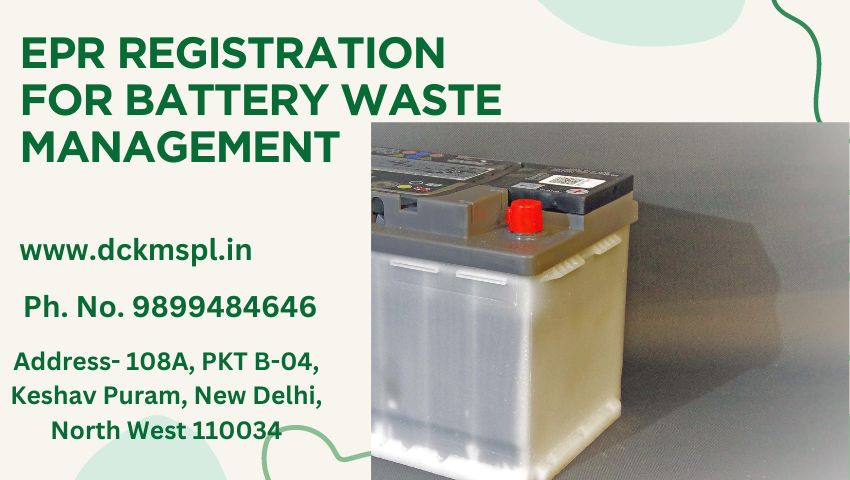
EPR, or Extended Producer Responsibility, is a system that shifts the financial and environmental responsibility for a product’s lifecycle onto the producer. This includes managing the waste generated by the product after it reaches the end of its usable life. A key element of EPR registration for battery waste management is the EPR fee. Producers pay this fee based on the type and amount of packaging or products they place on the market. The fees are used to fund various activities such as:
- Collection and transportation of waste from consumers.
- Sorting and processing the collected waste for recycling or treatment.
- Public awareness campaigns to educate consumers on proper waste disposal and recycling practices.
The specific amount of an EPR fee can vary depending on several factors, including:
- The type of product or packaging: Fees are often higher for materials that are difficult or expensive to recycle.
- The weight or volume of the product: Producers of heavier or bulkier items typically pay more.
- The recyclability of the product: Products designed for easier recycling may incur lower fees.
- The geographical location: EPR registration for battery waste management programs and fee structures can differ between countries and even regions.
Here’s a breakdown of the benefits of EPR fees:
- Incentivizes eco-design: By linking fees to product characteristics, EPR encourages producers to design items that are easier to reuse, repair, or recycle.
- Promotes recycling: The collected fees ensure there’s sufficient funding for robust recycling infrastructure and programs.
- Reduces landfill waste: By making producers financially responsible for end-of-life management, EPR discourages simply throwing products away.
EPR fees are a critical tool in promoting a more circular economy, where resources are kept in use for longer and waste is minimized. As EPR programs continue to evolve, we can expect EPR fees to play an increasingly important role in driving environmental responsibility throughout the product lifecycle.
How to do epr regisrtration?
EPR, or Extended Producer Responsibility, programs are becoming increasingly common globally. If you're a producer, importer, or brand owner (PIBO) placing products on the market, EPR registration might be necessary. Here's a simplified overview of the general process:
1. Gather Required Documents:
The specific documents needed for EPR registration can vary depending on your location and the type of product. However, some common requirements include:
- Company registration documents (PAN, GST, etc.)
- Details of the products you sell (type, quantity)
- Waste management plan outlining your approach to handling end-of-life products
- Authorization from a Producer Responsibility Organization (PRO) in some cases
2. Identify the Registration Portal:
The EPR program in your region will likely have a dedicated online portal for registration. Research your local environmental authority or EPR program website to find the official registration platform.
3. Register Online:
Once you have the portal identified, follow the registration steps. This typically involves creating an account, providing company and product information, uploading required documents, and paying any applicable fees.
4. Verification and Approval:
The regulatory body will review your application. You might need to address any missing information or clarifications requested during this stage.
5. Maintain Compliance:
Upon successful registration, you'll receive an EPR registration number. Remember, EPR registration is an ongoing responsibility. Keep detailed records, fulfill your EPR obligations (like waste collection targets), and renew your registration when required.
Remember: This is a general guide. Always consult the official EPR program website or relevant authorities for the most up-to-date and region-specific registration procedures.




